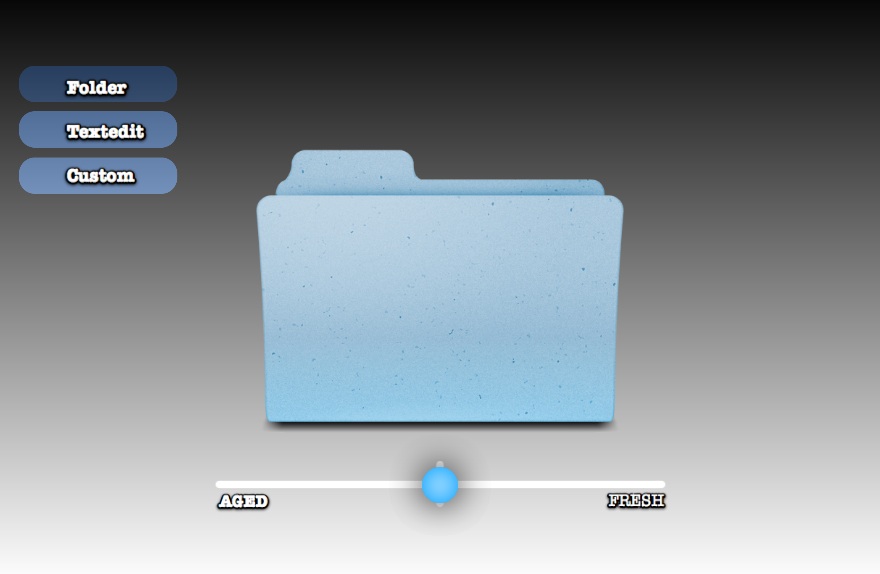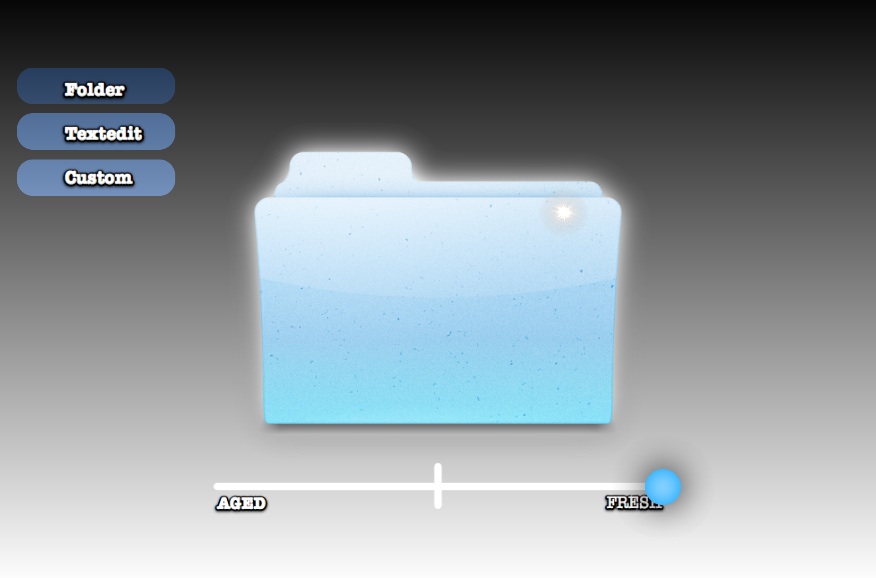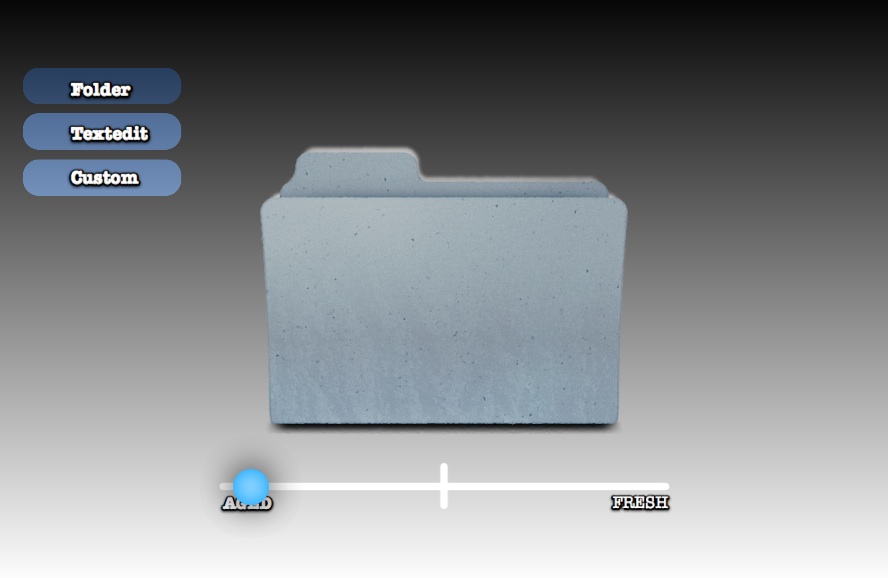Kinect Hacking a New Musical Interface
 Sunday, September 18, 2011 at 4:14PM
Sunday, September 18, 2011 at 4:14PM DJ fresh - Louder JAMkinect from Jonathan Hammond on Vimeo.
Found via the great kineme Quartz Composer forum
 Keith Lang | Comments Off |
Keith Lang | Comments Off |
 Sunday, September 18, 2011 at 4:14PM
Sunday, September 18, 2011 at 4:14PM DJ fresh - Louder JAMkinect from Jonathan Hammond on Vimeo.
Found via the great kineme Quartz Composer forum
 Friday, March 19, 2010 at 11:33PM
Friday, March 19, 2010 at 11:33PM I've previously written about the idea of visually ageing files and folders. The aim is to provide more metadata to the user visually—which of these folders did I just put here? What's been here a long time and really needs to be filed?
In the spirit of Getting Real I've made a quick mockup app called 'Freshness' to demonstrate how these 'ageing' and 'freshness' affects might be programatically applied to any icon.
You can download the Freshness app for free and have a play. I'd love to hear your feedback. Please note that Freshness.app requires Mac OS 10.6 Snow Leopard.
Are the effects too strong, or too subtle? Does this provide real value, or is it just novelty? How else can 'age' and 'freshness' be visually displayed?



Credit: Original Folder Icon by Guifa. 'Custom' Application icon by Sebastiaan De With. Made with Quartz Composer and turned into an Application with Kineme's QuartzBuilder.
 Monday, October 12, 2009 at 10:34PM
Monday, October 12, 2009 at 10:34PM
Here's a prototype I've created to show how the Mac desktop might be augmented with contextual information/images. I've been thinking about this for a while, but was inspired by the release of the Windows application, Fences. I'm using the desktop as a simple demo space, but in reality this information could be added to any spatial file/folder view. I look forward to your comments and ideas.
UPDATE: Rémy has pointed out the Mac app-in-development, Grape (thanks!). The developer has stated it's development is currently 'on hold', but it's stated plans are quite ambitious and would be something like a 2D combo of Fences and Bumptop.
 Saturday, August 2, 2008 at 9:23AM
Saturday, August 2, 2008 at 9:23AM If you're a Mac user then you may be familiar with the Macbreak video podcast with Alex Lindsay. The last three episodes have included yours truly showing some little interesting Quartz Composer fun tricks, including my take on Wiimote-powered heading tracking, originally invented by Johnny Lee, and made popular by the TED talks.
I'm still getting used to being in front of the camera, but many thanks to Joe and Alex Lindsay of the Pixel Corps for making it a fun and comfortable experience!
The show is only available as a podcast, so you need to click the links below to to find them in iTunes.
Head Tracking with a Wiimote and Quartz Composer
Moving Images with Sound
Motion Detection with Quartz Composer
 Quartz Composer is an excellent tool for developing ideas quickly, and beautifully integrates into Cocoa (Mac) programming. However the interface is a little clunky to use, and the concepts take a while to wrap your head around. However, as it progresses, I can see Quartz Composer, and tools like it, becoming something that the 'average' person uses to connect a few 'blocks' together to make themselves a custom application. The convergence of scripting, patch programming, and recording actions seems to be the approach which would most idiomatically cover all program design concepts.
Quartz Composer is an excellent tool for developing ideas quickly, and beautifully integrates into Cocoa (Mac) programming. However the interface is a little clunky to use, and the concepts take a while to wrap your head around. However, as it progresses, I can see Quartz Composer, and tools like it, becoming something that the 'average' person uses to connect a few 'blocks' together to make themselves a custom application. The convergence of scripting, patch programming, and recording actions seems to be the approach which would most idiomatically cover all program design concepts.
 Quartz Composer in
Quartz Composer in  Announcements
Announcements